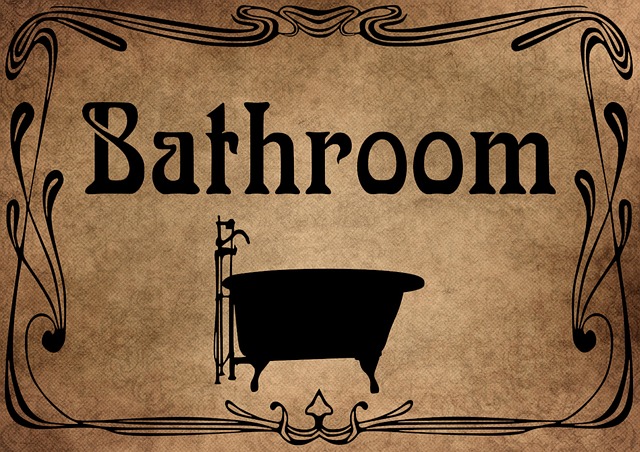Advanced energy-efficient fixtures are transforming bathrooms by enhancing hygiene, reducing water and electricity consumption, and simplifying routines. Sensor technologies detect motion or object presence, automatically activating features like taps, toilets, and soap dispensers. This trend offers numerous benefits, especially in post-pandemic public spaces, contributing to safer environments and sustainable living through responsible energy usage. However, successful integration requires thoughtful design, professional installation, and regular maintenance for optimal performance.
“Revolutionize your bathroom experience with the latest in touchless and sensor technology. In today’s digital era, these energy-efficient fixtures are transforming spaces into sleek, hygienic, and convenient oases. From hands-free taps to automated toilet seats, this technology promises a future where cleanliness and comfort intertwine.
This comprehensive guide explores the benefits of energy-efficient touchless fixtures, delves into available types, and provides crucial installation and maintenance insights for a smooth transition to this game-changing bathroom innovation.”
- Understanding Touchless and Sensor Technology in Bathrooms
- Benefits of Energy-Efficient Touchless Fixtures
- Types of Touchless Bathroom Fixtures Available Today
- Installation and Maintenance Considerations for Sensor-Activated Fixtures
Understanding Touchless and Sensor Technology in Bathrooms
In today’s world, where sustainability and convenience are paramount, touchless and sensor bathroom fixtures are revolutionizing the way we interact with our personal spaces. These energy-efficient fixtures utilize advanced sensor technology to offer a hands-free experience, promoting good hygiene practices while reducing water and electricity consumption. Sensors detect motion or the presence of objects, activating features like taps, toilets, and soap dispensers without physical contact.
This innovative approach not only enhances cleanliness but also contributes to environmental conservation. By eliminating the need for traditional handles and buttons, these fixtures significantly decrease energy usage, making them a smart choice for eco-conscious individuals and businesses alike. The market offers various options, from motion-activated faucets to automatic toilet flush systems, all designed to simplify bathroom routines while ensuring a comfortable and hygienic environment.
Benefits of Energy-Efficient Touchless Fixtures
The adoption of touchless and sensor bathroom fixtures offers a myriad of benefits, with energy efficiency being a prominent advantage. These advanced technologies utilize sensors to detect human presence, automatically activating features such as faucets, toilets, or hand dryers. This not only provides convenience by eliminating the need for physical contact but also significantly reduces energy consumption. Traditional bathroom fixtures often waste energy when left running unnecessarily, contributing to higher utility bills and environmental impact. By contrast, energy-efficient fixtures smartly respond only when needed, conserving water and electricity.
Furthermore, touchless technology promotes hygiene and cleanliness in public spaces, which is especially crucial in the post-pandemic world. Sensors ensure that surfaces are not contaminated by human hands, reducing the spread of germs. This feature is particularly beneficial in high-traffic areas like bathrooms, creating a safer environment for users while also contributing to a more sustainable lifestyle through responsible energy usage.
Types of Touchless Bathroom Fixtures Available Today
Today, there’s a wide array of touchless bathroom fixtures available, each designed to enhance hygiene and convenience. Among these, touchless sinks and faucets are among the most popular choices. These innovations utilize sensors to detect hands, activating water flow or other functions without direct contact. This not only prevents the spread of germs but also offers a sleek, modern aesthetic.
Additionally, energy-efficient fixtures like sensor-activated toilet seats and automatic hand dryers contribute to sustainability and cost savings. These products are not just practical; they’re also stylish, with various finishes and designs to complement any bathroom décor. As technology advances, we can expect even more sophisticated touchless options, further revolutionizing the way we use and interact with our bathrooms.
Installation and Maintenance Considerations for Sensor-Activated Fixtures
The installation of sensor-activated bathroom fixtures, such as touchless faucets and automatic toilet flushers, offers numerous benefits, including enhanced hygiene and convenience. However, proper consideration should be given to ensure a seamless integration into existing spaces. Professionals recommend careful planning, ensuring compatibility with existing plumbing and electrical systems. These fixtures often require specific wiring for their sensors and actuators, which may involve additional costs and expertise.
Maintenance is another key aspect. While sensor technology has advanced significantly, regular upkeep is still necessary. Regular cleaning of the sensors to prevent buildup of dirt and moisture is essential for optimal performance. Additionally, staying attuned to any mechanical or electrical failures and timely repairs can ensure these energy-efficient fixtures remain reliable, contributing to long-term cost savings and environmental sustainability.
Touchless and sensor bathroom fixtures are not just a futuristic concept but an increasingly practical and energy-efficient choice. By eliminating the need for direct contact, these innovations promote hygiene and offer numerous benefits, from reduced water and energy consumption to hands-free operation. As technology advances, the variety of available fixtures expands, making it easier than ever to incorporate these sustainable solutions into any bathroom space. When considering installation, proper maintenance ensures their longevity and optimal performance, ultimately enhancing the overall user experience.
